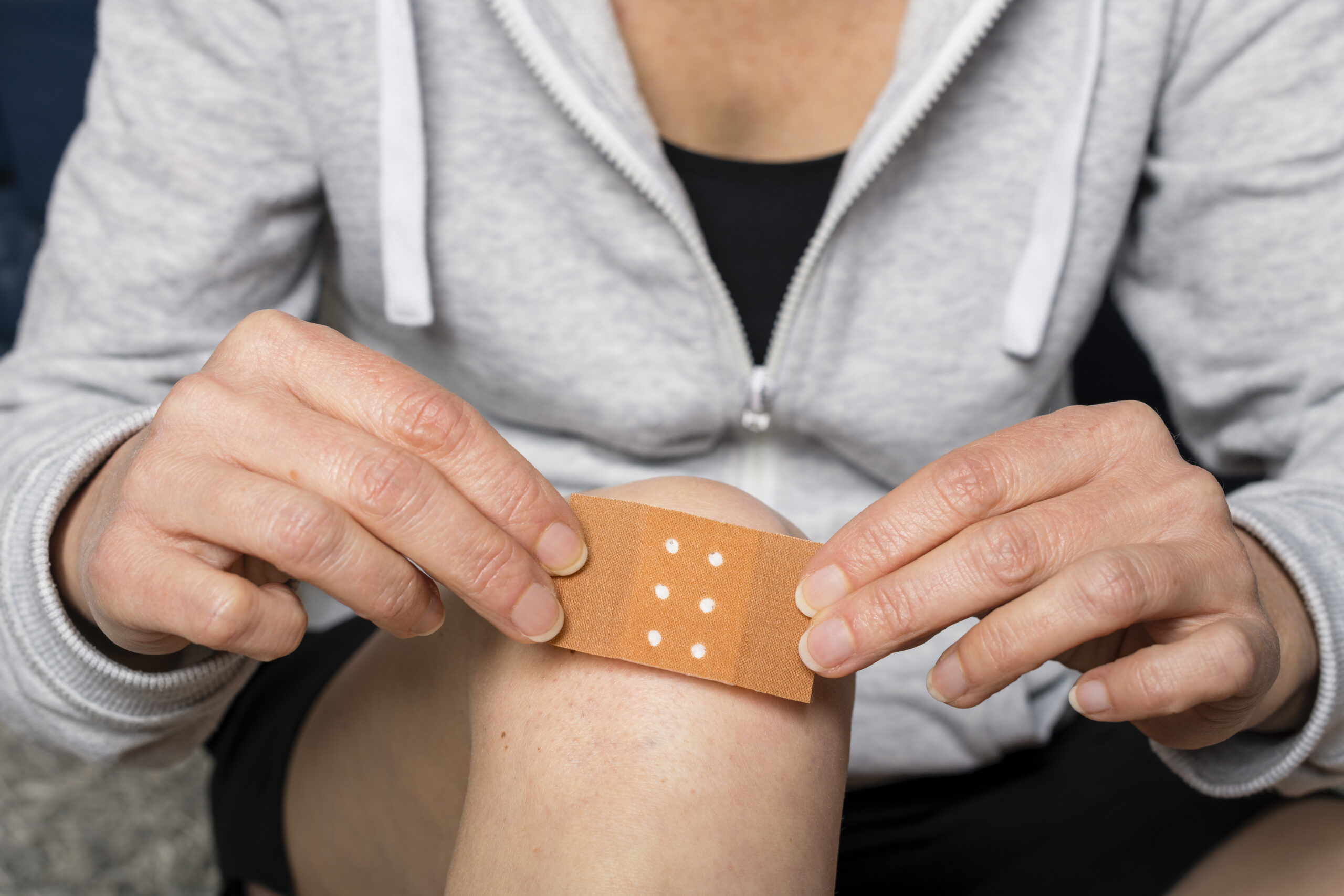Per- and polyfluoroalkyl substances (PFAS) are synthetic chemicals widely used in a broad range of consumer products to repel water, oil and stains. Their chemical stability and resistance to degradation, however, have led to increased regulatory, scientific and legal scrutiny, especially as public awareness of their potential environmental and health implications grows. While the most well-characterized human exposure pathways are ingestion, dermal exposure remains less studied and often misunderstood.
Products, such as bandages, baby wipes and feminine care products, may contain trace levels of PFAS due to intentional use or cross-contamination, which has prompted recent concerns about skin absorption and long-term health effects.
From a toxicological and exposure science standpoint, dermal absorption of PFAS is generally expected to be minimal, particularly at the low concentrations found in consumer goods. Nevertheless, litigation and advocacy efforts have intensified around PFAS in consumer products. To ensure that the public and juries reach sound decisions, a proper health risk assessment should be conducted. TRC’s team of strategic health scientists have performed over 1,000 similar assessments and are uniquely qualified to conduct this analysis.

Current Research on PFAS in Bandages
In bandages, PFAS can be added to the pads to help resist moisture and to the flaps as an adhesive ingredient. The ability of PFAS to provide durability and water repellency makes bandages more effective in protecting wounds from moisture and ensuring they stay securely in place. Mamavation, a non-profit “consumer watchdog group,” conducted a study to identify the presence of PFAS in bandage products. According to the study, bandages were sent to a laboratory for testing to identify the presence of organic fluorine. Of the 40 bandages tested, 26 showed organic fluorine concentrations above 10 parts per million (ppm). Simply measuring the presence of organic fluorine chemicals, such as PFAS, does not directly indicate the potential for adverse effects. The PFAS concentration in the material, type of PFAS, exposure pathways, duration of exposure and toxicity data are necessary to determine risk.
The method used by Mamavation’s laboratory involved determining total fluorine through oxygen flask combustion followed by measurement with an ion-selective electrode. This approach does not differentiate between various types of PFAS nor does it specify their concentrations. The group did not conduct a risk assessment to determine absorption, penetration to the blood stream, or dose.

Current Research on PFAS in Baby Wipes
A previous class action lawsuit alleged that a major manufacturer falsely advertised baby wipes as safe to use on infants and toddlers. The plaintiffs’ counsel conducted independent laboratory testing that alleged a concentration of 305 parts per trillion (ppt) of total PFAS in one sample. However, in the defendant’s motion to dismiss, the testing results cited in the complaint lacked study details (e.g., methodology, sample size, specific product lot) and were not directly linked to the plaintiff’s purchased product. The court agreed with the defense and granted the motion to dismiss, primarily on the grounds that the allegations were vague, speculative and unsupported by specific or actionable evidence, particularly regarding the claimed exposure and associated health risks.
In a similar case, plaintiffs alleged that another retailer’s baby wipes were falsely marketed as safe, while containing PFAS. In this case, the judge ruled to deny the defendant’s motion to dismiss. According to the plaintiff’s opposition to the motion, independent laboratory testing commissioned by plaintiffs’ counsel detected three PFAS compounds in the product: Perfluoropropionic Acid (PFPrA) at 3.6 parts per billion (ppb), Perfluoro-2-methoxypropanoic Acid (PMPA) at 0.15 ppb, and R-EVE at 0.040 ppb.
While these compounds raise toxicological concerns, the current data on their dermal absorption in human or animal skin—especially in infants—is extremely limited. There are no robust in vivo studies directly demonstrating significant dermal absorption of PFPrA, PMPA, or R-EVE through human skin. Currently, available data must be extrapolated from animal models and/or based on structurally similar compounds. Without a quantitative exposure assessment for these compounds, the scientific basis for alleging health risk from their trace presence in baby wipes remains speculative.

Current Research on PFAS in Feminine Care Products
PFAS are sometimes added to menstrual pads, panty liners and tampons as surface treatments to prevent leakage or are incorporated into backsheet coatings, enhancing product performance. As a result, PFAS may appear in products marketed as “breathable,” “dry-feeling,” or “ultra-absorbent.” Therefore, claims about widespread PFAS contamination in feminine hygiene products have gained traction.
Similar to what was seen with bandages, Mamavation partnered with a laboratory to detect total organic fluorine in tampons, pads and incontinence products (Segedie, L. 2022). Their findings suggested that 22% of tampons and 48% of pads tested contained organic fluorine, with concentrations ranging from 11 to 154 ppm. However, these results relied on total organic fluorine measurements, which cannot identify individual PFAS compounds or confirm their origin, leaving open the possibility of false positives or background contamination.
Similarly, a University of Notre Dame study reported fluorine detection in roughly half of 123 products tested, but didn’t isolate specific PFAS or assess exposure relevance (ACS.org, 2023). In contrast, a 2023 peer-reviewed study by Zhou et al. analyzed 11 tampon products using targeted analytical techniques and found that PFAS concentrations were below the limit of quantification in all samples. Their exposure assessment concluded that the estimated daily dose was negligible—less than 0.0001 nanograms per kilogram – body weight per day (ng/kg-bw/day)—highlighting a critical gap between detection-based headlines and actual toxicological significance.
Current Literature on Dermal Absorption of PFAS
Dermal absorption studies consistently demonstrate that PFAS are poorly absorbed through human skin, especially under realistic exposure conditions presented by these products. Fasano et al. showed that only 0.048% of APFO (Ammonium Perfluorooctanoate, a PFOA salt) penetrated human epidermis over 48 hours, with a permeability coefficient of just 9.49 × 10⁻⁷ centimeters per hour (cm/h), indicating extremely low bioavailability (Fasano et al., 2005). Franko et al. corroborated these findings, showing limited PFOA penetration in human skin, even under high-concentration conditions with acetone vehicles not representative of wipe formulations. Although up to 24% of the dose was retained in or on the skin, systemic uptake was minimal (Franko et al., 2012). Interestingly, Ragnarsdottir et al. demonstrated that short-chain PFAS exhibited measurable dermal permeation through in vitro 3D human skin models, with permeability generally decreasing as carbon chain length increased (Ragnarsdottir et al. 2024).
Most recently, Espartero et al. investigated the dermal permeation of 30 PFAS compounds using in vitro human skin and identified FBSA (perfluorobutane sulfonamide) as the only compound with consistent and significant permeation, reaching up to 9.8%, while other short-chain PFAS, including PFBA, PFPrS, and PFPeA, showed trace-level permeation (Espartero et al., 2025). Notably, PFPrA, PMPA, and R-EVE—the PFAS identified in a recent litigation matter (discussed above)—were not among the compounds tested, but based on their molecular structure and polarity, they are expected to be less dermally bioavailable than PFOA or FBSA. Yeh et al. evaluated PFOA dermal absorption under both finite and infinite dose conditions, and revealed a fractional absorption of 1.6% under finite dose and low permeability parameters, stead-state flux through the skin (Jss) 0.132 µg/cm²/hr; Permeability coefficient of (Kp) 0.000044 cm/h, reinforcing that under typical exposure conditions, dermal absorption of PFOA contributes minimally to total body burden when compared to oral ingestion, which remains the dominant exposure route in humans (Yeh et al., 2025).
Next Steps: How TRC Can Help
TRC’s tested practitioners have been studying this class of chemicals for nearly 15 years. Our experts have offered testimony in more than 800 depositions and over 60 trials where we presented our risk analyses and results.
The pathway to ensure that the public and juries reach sound decisions about exposures to these chemicals is to conduct a proper health risk assessment with respect to PFAS. Based on screening level assessments that we have performed, the data demonstrate that these chemicals may be considered safe for Americans who utilize consumer products; however, more assessments are needed.
Best Practices for Assessing PFAS Risk
A comprehensive PFAS risk assessment is essential for protecting human health and the environment, reducing legal liabilities and ensuring regulatory compliance. It is important to account for the following practices in toxicological contexts:
- Chemical Characterization and Identification: Use advanced analytical techniques for accuracy.
- Dermal Absorption Studies: Identify the correct toxicological studies to determine permeability and absorbed dose.
- Dose Estimation and Exposure Scenarios: Estimating absorbed doses requires integrating product use information with dermal absorption data.
- Toxicological Evaluation: Compare absorbed dose estimates to toxicological benchmarks.
- Risk Characterization: Properly communicate scientifically grounded takeaways to the public, regulators, judges and juries.
- Agency for Toxic Substances and Disease Registry (ATSDR). 2015. Draft toxicological profile for perfluoroalkyls. U. S. Department of Health and Human Services, Agency for Toxic Substances and Disease Registry.
- American Chemical Society. (2023, August 13). Indicator of PFAS found in some, but not all, period products.
- Drechsel DA, Towle KM, Fung ES, Novick RM, Paustenbach DJ, Monnot AD. 2018. Skin Sensitization Induction Potential From Daily Exposure to Fragrances in Personal Care Products. Dermatitis. 29(6): 324-331.
- EFSA Panel on Contaminants in the Food Chain, Knutsen HK, Alexander J, Barregard L, Bignami M, Bruschweiler B, et al. 2018. Risk to human health related to the presence of perfluorooctane sulfonic acid and perfluorooctanoic acid in food. EFSA Journal. 16(12): 1-284.
- Espartero, L.J.L., Z. Ishaq, S. Bradley, M. Moore, M. Yamada, X. Wang, T. Prow, A. Juhasz, and P.K. Thai. 2025. Dermal permeation of perfluoroalkyl substances in human skin – An in-vitro study. Chemosphere. 378:144408.
- Fasano, W. J., Kennedy, G. L., Szostek, B., Farrar, D. G., Ward, R. J., Haroun, L., & Hinderliter, P. M. (2005). Penetration of ammonium perfluorooctanoate through rat and human skin in vitro. Drug and Chemical Toxicology, 28(1), 79–90.
- Franko J, Meade BJ, Frasch HF, Barbero AM, Anderson SE. 2012. Dermal penetration potential of perfluorooctanoic acid (PFOA) in human and mouse skin. Journal of Toxicology and Environmental Health, Part A. 75(1): 50-62.
- Kluger J. 2024. Evidence of Dangerous ‘Forever Chemicals’ Found in Bandages. Time Magazine. April 5, 2024.
- Monnot AD, Tvermoes BE, Gerads R, Gurleyuk H, Paustenbach DJ. 2016. Risks associated with arsenic exposure resulting from the consumption of California wines sold in the United States. Food Chemistry. 211: 107-113.
- Ragnarsdottir, O., M. Abou-Elwafa Abdallah, and S. Harrad. 2024. Dermal bioavailability of perfluoroalkyl substances using in vitro 3D human skin equivalent models. Environment International. 188:1-9.
- Segedie, L. (2022, October 26). Do your tampons contain PFAS « forever chemicals? » They might. Mamavation.
- Segedie, L. (2022, November 30). PFAS “Forever Chemicals” Inside Sanitary Pads & Incontinence Pads – Report 2022. Mamavation.
- Segedie L. 2024. Band-Aids & Bandages with Indications of PFAS “Forever Chemicals” Report. Mamavation.com.
- Towle KM, Drechsel DA, Warshaw EM, Fung ES, Novick RM, Paustenbach DJ, Monnot AD. 2018. Risk Assessment of the Skin Sensitization Induction Potential of Kathon CG in Rinse-off and Leave-on Personal Care and Cosmetic Products. Dermatitis. 29(3): 132-138.
- van Ravenzwaay B, Leibold E. 2004. The significance of in vitro rat skin absorption studies to human risk assessment. Toxicology in Vitro. 18(2): 219-225.
- Yeh, A., R.L. Prueitt, L.E. Kerper, and B.D. Beck. 2025. Evaluating dermal absorption of perfluorooctanoic acid (PFOA) and implications for other per- and polyfluoroalkyl substances (PFAS). Regulatory Toxicology and Pharmacology. 156:1-9.
- Zhou, Y., Guo, X., Meng, J., Sun, H., Li, S., & Wang, Y. (2023). Per- and polyfluoroalkyl substances in personal hygiene products: The implications for human exposure and emission to the environment. Journal of Hazardous Materials, 448, 130858.




